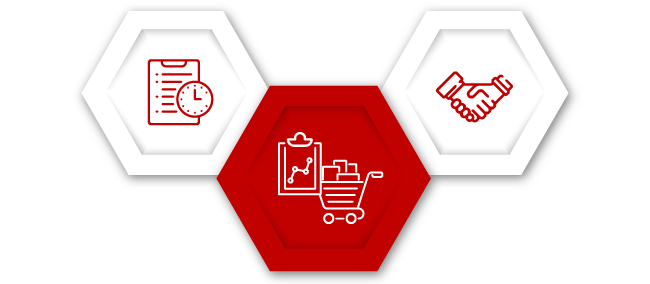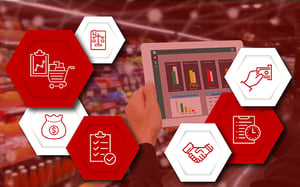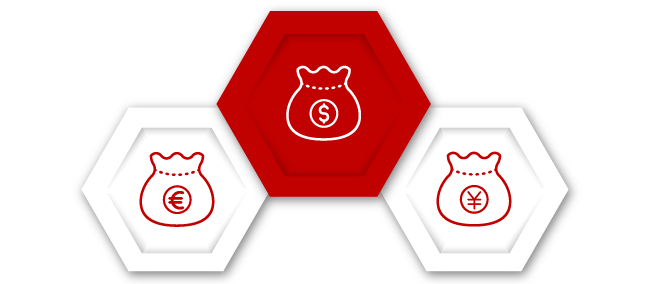Given that shelf space is a retailer's most prized asset, you’d expect them to guard it dearly. And rightly so. They're not going to offer you or any other supplier space unless it makes business sense to stock your products. Of course, there are many different ways you can secure a spot on the shelf. And of these, one is to pay slotting fees.
What are slotting fees?
If you've been in the retail business for long enough, you'll have no doubt come across slotting fees. You may even have paid your fair share, depending on the products you offer or the category you supply, so you might not think it's worth unpacking the term.
For the sake of this piece, though, and for any supplier who is new to the business or hasn’t heard about them before, here’s a brief description:
A slotting fee, also known as a slotting allowance, is a payment (usually once-off) that you would offer to a retailer to ensure your products appear on the shelf in their stores. That's why you'll also hear it referred to as a shelf placement fee.
Of course, paying for shelf space isn’t a new trend. It’s been part of the retail industry for at least the last 35 years (it was first referenced in the early 1980s) if not longer. And it’s especially widespread across grocery stores and supermarkets.
But that doesn’t mean it’s not controversial.
For example, it’s common to hear talk of it being unethical. That argument is especially valid if you’re a small supplier with a limited budget. By making use of a slotting fee, retailers create high barriers that make it difficult for you to compete with your larger competitors. There is also the point that retailers can abuse their position and ask for exorbitant fees, thereby profiting at your expense.
An initial slotting fee could be as much as $50 000 per product per store on an annual basis. That cost could also climb significantly if you’re attempting to get into a high-demand market. Then again, you do need to view this from the side of the retailer. They’re looking to fill their shelves with products that will sell. They can’t afford to stock just any product.

Why retailers and suppliers should make use of slotting fees
Having read the above, it may seem like investing in slotting fees provides clear benefits for retailers and only a few, if any, for suppliers. In reality, there are plenty of reasons why you and other suppliers should seriously consider paying such a fee.
Let’s first look at why a retailer would institute a slotting fee.
Benefits for the retailer
The first and most obvious benefit is that a slotting fee offsets the costs associated with bringing a new product into their store.
Let’s say a retailer wants to bring in a new product. They need to consider how many people will be responsible for managing the shelf space for their stores. Then, how much will they need to pay their employees to fulfil this role? There is also the warehousing and distribution costs to consider as well as any costs related to introducing it to their inventory management system.
That said, the above calculations are necessary since there are many risks to bringing in new product lines. Consider this: according to Harvard Business School professor, Clayton Christensen, there are more than 30 000 new consumer products introduced into the market every year. And 95% of them fail.
Then, if you look specifically at grocery store products, where slotting fees are most prominent, according to Professor Inez Blackburn of the University of Toronto, the failure rate sits at between 70 and 80%. A slotting fee - essentially sharing the costs of ranging a new product between retailers and suppliers - helps to mitigate this risk.
A second benefit is that it allows retailers to remain competitive with other stores that require slotting, a point made in a case study on slotting allowances conducted by the Federal Trade Commission.
Benefits for the supplier
As a supplier, there are quite a few benefits to paying slotting fees. The first two are interdependent.
For example, the first, and primary reason why you’d pay a slotting fee is that it guarantees you space on the shelf. The result, which is also the second benefit, is that it allows for sales. Not only that, by paying for space on the shelf, you’re able to gain exposure for your products.
What’s more, if the product that you’ve bought space for grows in popularity, it might even result in increased exposure for your brand and thus more interest in any other products that you might offer. With that knowledge, you could approach a retailer and confidently argue for more space.
There is also a third benefit. If you buy enough shelf space, you stand every chance of being able to exercise influence over the layout of the grouping as well as the store. That, in itself, is enough of an argument for paying for such a fee because that leads to more sales and exposure for your brand.
While slotting fees may seem unethical and controversial, in many cases they are a necessary evil.

How to ensure slotting fees are free and mutually beneficial
1. Have a plan and stick to it
Before you begin to consider playing a slotting fee to get your product into a store, you need to have a plan. That much should be obvious. And yet, that doesn’t mean that this mistake doesn’t happen.
In a rush to get your product into a store, you might not even worry about this. But that’s a mistake that you’ll end up regretting.
So what does such a plan entail?
For one, you must be prepared to expect a slotting fee so that it doesn’t come as a surprise if the topic is brought up.
Then, you must know how much you are willing to spend. How high are you able to go without ruining your business? Once you have a figure that fits your budget, stick to it. Remember, this isn’t a one-way negotiation. If a large retailer is asking too much, don’t agree to meet them just because they can offer you a slot in their store.
Regardless of how much shelf space you’re promised, it doesn’t guarantee sales.
2. Use sales and marketing tactics
As much as securing shelf space places you at an advantage as it puts you in front of shoppers, you can’t expect to sit back and wait for sales.
Instead, you need to use various sales and marketing tactics available to you. Typical examples here would be to run promotions in-store or host a demonstration.
If you’re looking to improve your promotional planning efforts, there are four steps you need to take: One, decide on your objectives. Two, align yourself with the retailer. Three, implement the promotion in-store. Four, measure the outcomes and adjust where necessary.
We dive into the above steps in more detail in this piece. Considering the statistics we quoted around the failure of new products, promotions and the like are crucial. Also, as noted above, by promoting one product, you can improve your reputation amongst shoppers enough for them to show interest in other products that you offer.
If the product you put on promotion exceeds their expectations, they could also purchase it once it’s returned to its regular price.
3. Consult your retail data
As much as you can pay a slotting fee to secure your product's space on the shelf, there is another way to guarantee space. And that is to look at and understand your retail data.
Here’s why:
You can use your retail data to prove to retailers that it’s worth giving your products space on the shelf. This is regardless of if you already have products in a retail store and you’re currently renegotiating for more space. Or, you’re in the process of negotiating an initial listing.
Let’s say, for example, that you’ve noticed a trend in the market, which indicates a current or future demand for a product. And you happen to supply that product. You can approach the retailer fully confident in your product and what you can offer.
What’s more, having this information places you in a far stronger position when it comes to negotiating a slotting fee. Instead of taking what a retailer gives you, you can arrange a price that suits your pocket.
4. Measure your progress
The last step, which you could argue is the most crucial, is to measure your progress. You could even include it in with the above point around consulting your retail data.
That’s because you should measure how your product performs throughout the month. It can’t be an afterthought.
After all, this is about presenting yourself and your product in the best possible light. As much as you can pay to get space on a shelf, you also need to prove why a retailer should take a chance on stocking your product.
Also, it’s worth pointing out that as you measure, and you find your products selling better than expected, you can renegotiate your space. And, if you’ve proved yourself with one product, when the time comes for you to begin negotiations around stocking a new line, it could be easier to persuade the retailer to give you a slot, however small.
Of course, that doesn’t guarantee that you’ll get space for a different line. But, at least, you’ll have built up a solid enough working relationship and reputation.
Conclusion
DotActiv Lite, Pro, and Enterprise are all different versions of our category management software that allows you to drive category performance. You can visit our online store here or book a custom exploratory consultation here.



